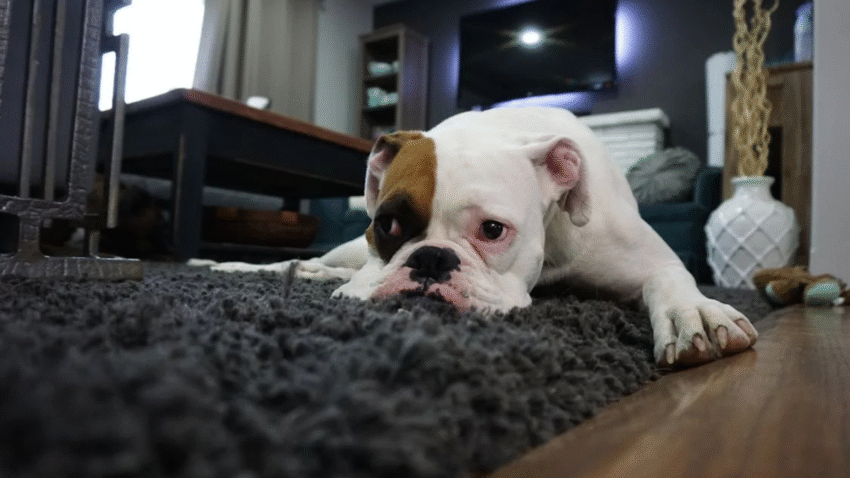Introduction
Curious about feeding your dog a raw diet but not sure where to start? Worried about upsetting their stomach or doing it wrong? You’re not alone. Transitioning to raw can feel overwhelming, but with the right approach, it can be a healthy and rewarding shift. In this guide, you’ll learn how to introduce raw food to your dog’s diet step by step, ensuring a safe and smooth change that supports digestion, energy, and long-term wellness.
Why a Raw Diet Matters for Dogs
Raw feeding is based on the idea that dogs thrive best on a diet that resembles what their ancestors ate in the wild—meat, bones, and organs, rather than processed kibble. Advocates of raw feeding report benefits such as:
- Healthier skin and coat
- Cleaner teeth and fresher breath
- Better digestion and smaller, firmer stools
- More energy and leaner body condition
- Reduced allergy symptoms
While it’s not for everyone, a raw diet can offer incredible results when done correctly. But making the switch too quickly or without planning can lead to digestive upset or nutritional imbalances. That’s why a gradual, informed transition is key.
Step-by-Step Guide to Introducing Raw Food to Your Dog’s Diet
Follow these steps to safely introduce raw food into your dog’s meals.
1. Do Your Research
Before you begin, learn the basics of raw feeding. There are two main approaches:
- Prey Model Raw (PMR): Mimics a whole animal, including muscle meat, bones, and organs.
- BARF Diet (Biologically Appropriate Raw Food): Includes raw meat plus some vegetables, fruits, and supplements.
Understand which method fits your dog’s lifestyle and your comfort level. Some people prefer homemade raw meals; others use commercial raw food blends for convenience and safety.
2. Start with a Gradual Transition
Rather than switching overnight, slowly introduce raw food over 7–10 days:
Example schedule:
- Days 1–3: 75% current food, 25% raw
- Days 4–6: 50% current food, 50% raw
- Days 7–9: 25% current food, 75% raw
- Day 10: 100% raw
Some dogs transition faster, while others may need more time. Always monitor your dog’s digestion—loose stools, gas, or lethargy can mean you need to slow down.
3. Choose a Single Protein to Begin
Start with an easily digestible protein like:
- Chicken (with bone)
- Turkey
- Beef
Avoid mixing proteins at first. Stick with one for at least a week to see how your dog reacts. If all goes well, you can introduce new proteins one at a time.
4. Introduce Raw Meaty Bones (Safely)
Raw bones are a source of calcium and help clean teeth. Good beginner options include:
- Chicken wings or necks (for small dogs)
- Chicken quarters or turkey necks (for larger dogs)
Important: Never cook bones. Cooked bones can splinter and cause injury.
Always supervise bone time, and choose sizes that your dog cannot swallow whole.
5. Add Organ Meat Gradually
Organs are nutrient-dense but can cause loose stools if added too quickly. Once your dog is handling muscle meat and bones well, add:
- Liver (start small)
- Kidney
- Spleen
Organs should make up about 10% of a raw diet, with liver being about half of that.
6. Optional: Add Vegetables or Supplements
If following a BARF-style plan, you can blend in:
- Leafy greens
- Carrots
- Blueberries
- Pumpkin (great for digestion)
Some owners also add supplements like fish oil, kelp, or probiotics. These support digestion and provide nutrients that may be missing from raw meat alone.
Common Mistakes to Avoid
Avoid these common pitfalls when introducing a raw diet:
1. Switching Too Fast
Jumping straight into a full raw diet can overwhelm your dog’s system. Take it slow and watch how your dog responds at each stage.
2. Feeding Cooked Bones
This is dangerous. Always feed bones raw. Cooked bones can splinter and cause choking or intestinal damage.
3. Skipping Nutrient Balance
Feeding only chicken breast or ground beef without bones or organs leads to nutritional deficiencies. Raw diets must include:
- 80% muscle meat
- 10% bone
- 10% organs (half of which should be liver)
4. Mixing Kibble and Raw Long-Term
While it’s okay during transition, kibble and raw digest at different rates. Long-term mixing can cause digestive upset. Choose one approach for consistency.
5. Ignoring Hygiene and Food Safety
Raw meat can carry bacteria. Always:
- Wash your hands
- Use separate cutting boards for dog food
- Sanitize bowls and utensils after each use
- Store raw meals in the fridge or freezer properly
Extra Tips & Recommendations
Here are a few more tips for raw feeding success:
1. Use Pre-Made Raw Meals
If you’re nervous about balancing nutrients, many companies offer frozen or freeze-dried raw meals that meet AAFCO standards. These are convenient and take the guesswork out of feeding raw.
2. Feed at Room Temperature
Let frozen meals thaw and come to room temperature before feeding. Cold meals can upset digestion or slow eating.
3. Stay Consistent
Feed raw meals at the same time every day, and stick to a schedule. This helps your dog adjust faster and build healthy eating habits.
Conclusion
Feeding your dog a raw diet doesn’t have to be confusing or risky. With a step-by-step approach—starting slow, choosing the right ingredients, and keeping balance in mind—you can improve your dog’s digestion, energy, and overall health. Take your time, monitor your dog’s response, and enjoy the process of giving them a diet that supports their natural instincts.
🥩 A healthy raw diet starts with informed choices and a gradual shift.
🐾 Follow us for more guides on raising a healthy, happy dog—naturally!
